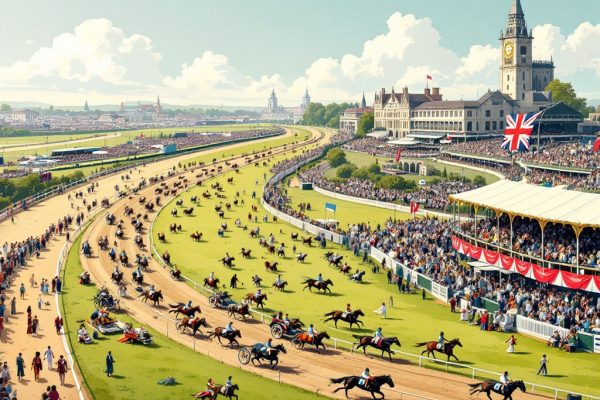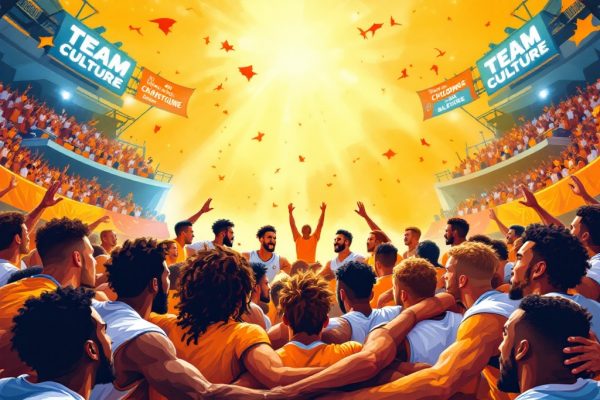History of Baseball in the USA
Discover the captivating story of baseball, from its humble beginnings in early 19th-century America to its status as the national pastime. Learn how the game evolved from English bat-and-ball games, with key milestones like the 1846 Hoboken game and the Knickerbocker Rules of 1845 shaping its modern form. Explore the rise of professional leagues, the impact of the Civil War, and the struggle against segregation, culminating in Jackie Robinson’s historic breaking of the color barrier in 1947. Dive into the rich history of baseball and its profound influence on American culture. Read on to uncover the complete story of America’s favorite pastime.
Important information

- Baseball evolved from English bat-and-ball games like rounders, arriving in the US during the early 19th century.
- The 1845 Knickerbocker Rules standardized key elements of the game, creating the foundation for modern baseball.
- The National League, formed in 1876, solidified baseball’s professional status and helped it become America’s pastime.
- Jackie Robinson’s 1947 major league debut broke the color barrier, a pivotal moment in both baseball and civil rights history.
- The World Series and baseball’s cultural impact cemented the sport’s place in American society, influencing art, literature, and community identity.
The Origins of Baseball in the USA
Baseball emerged in the United States during the early 19th century, evolving from bat-and-ball games like rounders, a popular pastime in England. A pivotal moment in baseball history occurred in 1846 with the first official US game in Hoboken, New Jersey.
The Evolution from Bat-and-Ball Games
American baseball originated from English bat-and-ball games, especially rounders, its direct predecessor.
Early References and Popularity
The buzz around baseball began as early as 1823, with reports of regular Saturday games outside New York City. This burgeoning popularity soon led to the establishment of amateur men’s clubs between the 1830s and 1850s, cementing baseball’s place as a beloved pastime.
Formation of Early Baseball Clubs and Rules
In 1845, the New York Knickerbockers Base Ball Club revolutionized baseball by establishing the sport’s first official rules, thanks to the leadership of Alexander Cartwright. These groundbreaking “Knickerbocker Rules introduced key elements like the diamond-shaped infield, three strikes for an out, three outs per team per inning, and nine-player teams. These innovations became the foundation of modern baseball. Later, in 1863, the formation of the National Association of Base Ball Players marked the dawn of organized baseball leagues.
The Knickerbockers and the Knickerbocker Rules
The Knickerbocker Base Ball Club revolutionized baseball in 1845 with their groundbreaking Knickerbocker Rules. These rules formalized the game, introducing elements we recognize today:
- diamond-shaped infield,
- three outs per inning,
- nine-player teams.
Some rules addressed practices no longer part of the game:
- forbidding “soaking” (obstructing),
- prohibiting “plugging” (hitting) runners.
Fielders were required to tag or force out runners. These Knickerbocker Rules became the foundation of modern baseball.
Establishment of the National Association of Base Ball Players
In 1857, sixteen New York baseball clubs, including the Knickerbockers, gathered to form the National Association of Base Ball Players (NABBP). This pivotal moment marked the establishment of baseball’s first official governing body and its inaugural championship, cementing the sport’s growing popularity.
Baseball in the 19th Century
Baseball’s 19th-century evolution was dramatic. Starting as a leisurely activity for amateur men’s clubs, it quickly blossomed into semi-professional and then fully professional leagues. The post-Civil War era significantly boosted the sport’s popularity, with the rise of professional leagues marking a turning point. This shift cemented baseball’s place as a major spectator sport and laid the groundwork for the modern game.
Growth of Amateur Men’s Ball Clubs
Baseball’s popularity surged in the mid-19th century (1830s-1850s), with amateur men’s clubs springing up across the country. The game’s simple rules and ease of learning made it a community favorite. This period represents a pivotal moment, marking baseball’s transition from a casual pastime to an organized sport.
Semi-Professional Baseball Clubs in the 1860s
Baseball’s rise in popularity during the 1860s fueled the growth of semi-professionalism, as teams began compensating some players. This blurred the distinction between amateur and professional, ultimately leading to the formation of the first openly professional team, the Cincinnati Red Stockings, in 1869.
The Rise of Professional Leagues Post-Civil War
The Civil War (1861-1865) significantly influenced the rise of professional baseball leagues in the 1870s. Soldiers played baseball during their downtime, spreading the game’s popularity. This led to a surge in players and the formation of more structured leagues upon their return home. The National Association, existing from 1871-1875, predates the National League, but its instability limited it to just five seasons. However, it paved the way for the National League, established in 1876, which became the first enduring professional baseball organization.
Major Developments in Professional Baseball
Professional baseball advanced significantly with the formation of the National League in 1876. As baseball’s popularity surged in the late 19th century, mirroring American values, it became the nation’s pastime. However, this progress was marred by segregation. In 1885, the Cuban Giants emerged as the first professional Black baseball club, demonstrating exceptional talent despite persistent discrimination. They persevered, leaving a lasting legacy.
Formation of the National League in 1876
Founded in 1876, the National League of Professional Base Ball Clubs brought structure and organization to baseball, establishing it as the first professional league. Standardizing rules and schedules, the league fostered healthy competition and solidified baseball’s professional status.
Baseball as the National Sport of the USA
Baseball’s popularity exploded in the late 19th century, cementing its status as America’s pastime. This rise mirrored the sport’s increasing cultural influence, further solidified by the emergence of professional leagues, such as the 1876 National League, marking a pivotal moment in baseball history.
The Cuban Giants: First Professional Black Baseball Club
In 1885, the Cuban Giants made history by becoming the first professional Black baseball club. This milestone predated the Negro Leagues and symbolized progress during a time of significant racial segregation in professional baseball.
The Negro Leagues and Racial Barriers
Racial segregation in professional baseball, known as the color line, led to the formation of the Negro Leagues. Barred from Major League Baseball, Black athletes established their own independent teams, fostering a vibrant and competitive baseball scene. This dramatically altered baseball history, giving rise to leagues like the Negro National League and the Negro American League. These leagues showcased remarkable talent and significantly influenced the sport’s development. The Negro Leagues not only provided opportunities for Black athletes but also served as a powerful symbol of resilience and resistance against racial discrimination. The eventual integration of Major League Baseball, breaking the color barrier, marked a significant turning point in American sports and civil rights history. The legacy of the Negro Leagues continues to inspire and remind us of the struggle for equality and the enduring power of sport.
Gentlemen’s Agreement and the Color Line
Around 1887, an unwritten agreement known as the Gentlemen’s Agreement formalized racial segregation in professional baseball. This practice effectively banned Black players from both major and minor leagues, cementing the “color line”.
Development of the Negro Leagues
The Negro Leagues emerged as a direct response to racial segregation in professional baseball. These leagues provided a platform for African American players, excluded from the major leagues, to compete professionally. The structure and organization of these independent Black baseball leagues varied, encompassing both fully professional and semi-professional entities.
Integration and Modern Baseball
Jackie Robinson’s courageous 1947 debut with the Brooklyn Dodgers shattered baseball’s color barrier, opening doors for other Black athletes like Larry Doby, Satchel Paige, and Roy Campanella. This wave of talent significantly intensified competition and transformed the game. While full integration took time, with some teams resisting change, baseball achieved it by the mid-1960s, mirroring society’s broader shift toward racial equality and a more just sporting world.
Breaking the Color Line: Jackie Robinson and Beyond
Jackie Robinson’s 1947 debut with the Brooklyn Dodgers was a pivotal moment in American history, ending segregation in professional baseball and shattering the color barrier. This courageous and skilled athlete’s entry into the Major Leagues paved the way for other African American players and ignited the full integration of the sport, enriching it with diverse talent. Robinson’s impact extended beyond baseball, significantly influencing the broader civil rights movement by inspiring further desegregation efforts and demonstrating the power of sports to catalyze social change.
Full Integration and Modern Professional Baseball
Jackie Robinson’s courageous 1947 debut with the Brooklyn Dodgers shattered baseball’s color barrier, ending segregation in the Major Leagues and paving the way for generations of talented African American athletes. This pivotal moment dramatically improved the sport, fostering greater competition and a richer, more diverse playing field. Today, players from all walks of life participate at every level, a testament to baseball’s ongoing commitment to inclusivity.
Baseball’s Golden Age and Cultural Impact
The World Series, a battle of baseball giants, captivated the nation and cemented the sport’s place in American culture. Baseball’s pervasive influence embodied national values, inspired artistic expression, and even fostered community identity. The sport’s accessibility and competitive spirit fueled its widespread appeal and enduring legacy. For example, its impact on literature, film, and music demonstrates its significance in American storytelling. Local teams became a source of civic pride, fostering unity and shared experiences that strengthened community bonds.
The Role of the World Series and Major League Baseball
The World Series determines Major League Baseball’s ultimate champion, pitting the American and National League winners against each other. Since 1903, this championship series has become a major cultural event in the United States.
Baseball’s Influence on American Culture
Baseball became a potent symbol of American values, embodying teamwork and healthy competition. It fostered community by creating local teams, giving people a sense of belonging. Its influence also extended to art, enriching American culture through its presence in literature, film, and music. Baseball’s impact is pervasive throughout American life.















